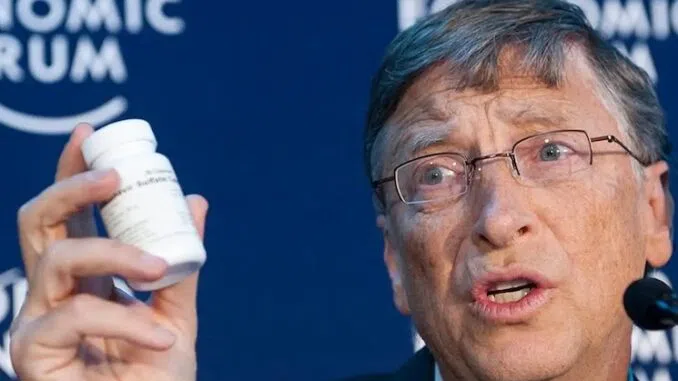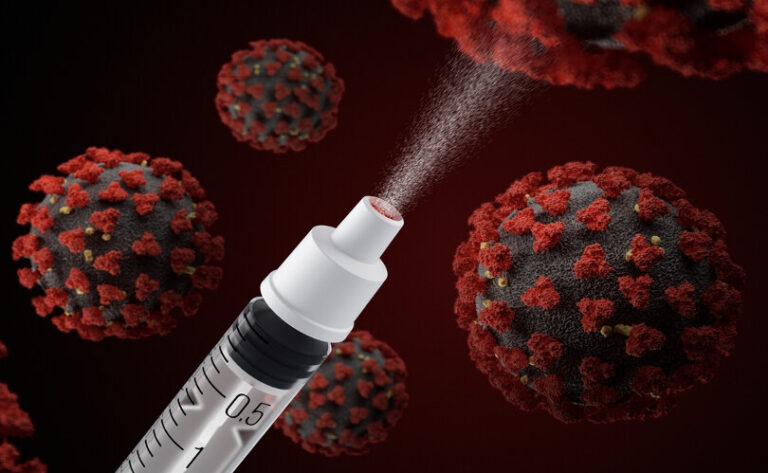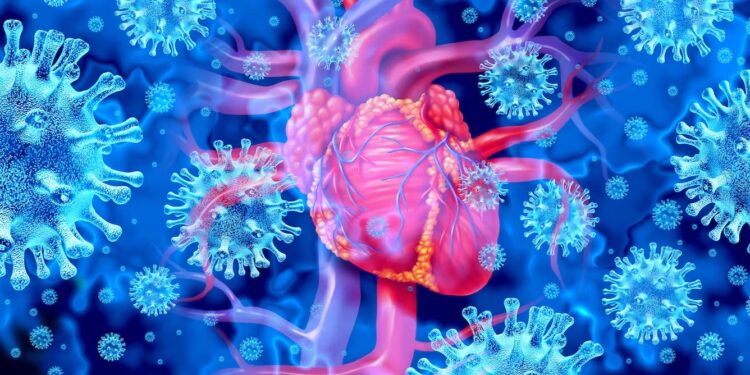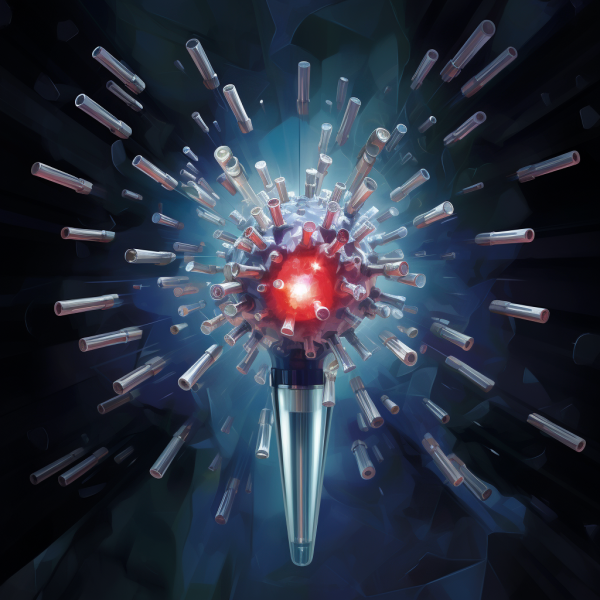Is Quercetin a Safer Alternative to Hydroxychloroquine?
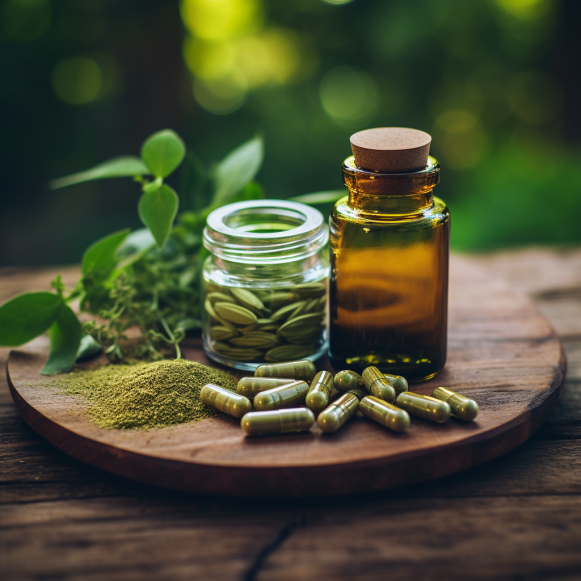
Evidence suggests that hydroxychloroquine works for COVID-19 because it is a zinc ionophore, which means it transports zinc into your cells. A study is being conducted by Canadian and Chinese researchers to evaluate the efficacy of this alternative powerful immune booster and broad-spectrum antiviral.
AT-A-GLANCE STORY
A Chinese trial that compared the clinical outcomes of COVID-19 patients treated with the antimalarial drug hydroxychloroquine to those who received standard of care alone found “disappointing” results.
The hydroxychloroquine group had a negative conversion rate of 85.4 percent after 28 days, compared to 81.3 percent for the control group. There was no difference in symptom relief between the two groups.
The study did not, however, include supplemental zinc, which aids in viral replication prevention. Evidence suggests that hydroxychloroquine works for COVID-19 because it is a zinc ionophore, which means it transports zinc inside your cells.
The high-dose arm of a Brazilian chloroquine trial was halted early due to patients developing ventricular tachycardia, a dangerous heart rhythm problem. Chloroquine is a more toxic drug than hydroxychloroquine.
Quercetin is a zinc ionophore that occurs naturally. When combined with zinc, it may help to prevent and possibly treat COVID-19. The effectiveness of quercetin against COVID-19 is currently being studied.
The debate over whether the antimalarial drug hydroxychloroquine is an effective treatment for COVID-19 continues, with a Chinese trial (1)(2)(3) comparing clinical outcomes of those treated with the drug versus those receiving standard care alone reporting “disappointing” results.
Hydroxychloroquine Trial Results Are Disappointing
In addition to standard of care, 75 COVID-19 patients at 16 Chinese treatment centers received 1,200 milligrams of hydroxychloroquine (HCQ) for the first three days of treatment, followed by a maintenance dose of 800 mg per day for two weeks in mild to moderate cases and three weeks in severe cases. Another 75 patients received only standard care.
The primary endpoint was a 28-day negative SARS-CoV-2 conversion rate (viral load reduction). Secondary endpoints included clinical symptom improvement and normalization of C-reactive protein and blood lymphocyte count within 28 days.
According to the authors, the hydroxychloroquine group had a 28-day negative conversion rate of 85.4 percent compared to 81.3 percent for the control group. There was no difference in symptom relief between the two groups.
Adverse events were also more common in the hydroxychloroquine group (30%) compared to controls (8.8%). Table 2 of the study contains a list of the adverse events. (4)
Diarrhea was the most common adverse event, accounting for 10% of all reports. Nevertheless, the authors point out that: (5) “A significant efficacy of HCQ [hydroxychloroquine] on alleviating symptoms was observed when the confounding effects of anti-viral agents were removed in the posthoc analysis (Hazard ratio, 8.83, 95 percent CI, 1.09 to 71.3).”This was supported further by a significantly greater reduction in CRP [c-reactive protein] (6.986 in SOC plus HCQ versus 2.723 in SOC, milligram/liter, P=0.045) conferred by the addition of HCQ, which also resulted in a more rapid recovery of lymphopenia, albeit without statistical significance.
“Conclusions: Although HCQ did not result in a higher negative conversion rate, it did result in more clinical symptom relief than SOC alone in patients hospitalized with COVID-19 who did not receive antiviral treatment, possibly due to anti-inflammatory effects.” Adverse events were significantly increased in HCQ recipients, but no increase in serious adverse events was observed.”
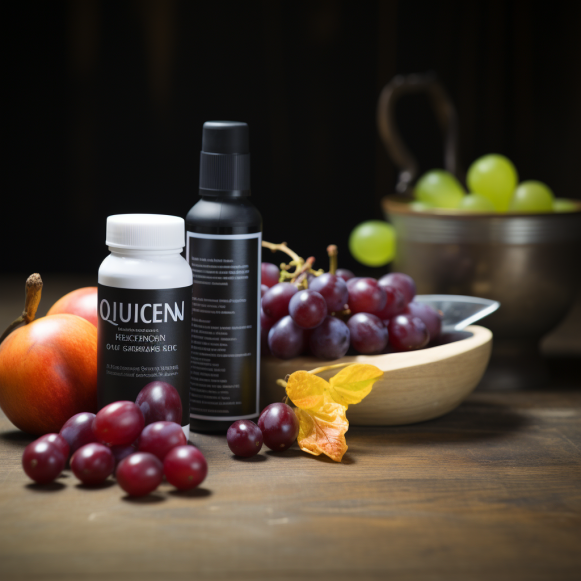
This Study’s Restrictions
There are a few things to note about this study. Aside from its small size, the patients received a far higher dose of hydroxychloroquine than is typically used in the United States—1,200 milligrams for the first three days, followed by 800 mg per day for two to three weeks, as opposed to the FDA’s suggested dosage of 800 mg on day one, followed by 400 mg per day for four to seven days, depending on severity. (6) Second, the majority of patients had mild disease with little hypoxemia, and third, treatment was started quite late, on average 16 to 17 days after disease onset. “Much of the pathogenesis of critical illness appears to result from dysregulated inflammation, rather than direct viral cytopathic effect,” wrote Josh Farkas, associate professor of pulmonary and critical care medicine at the University of Vermont, in response to the findings. This begs the question of whether any antiviral treatment will be beneficial for patients who present late with severe illness.Of course, earlier use of hydroxychloroquine may be beneficial (e.g., on an out-patient basis at the first signs of illness). This is being looked into, and more information should be available soon. Even if this works in the outpatient clinic, it is unlikely to have a significant impact on the management of these patients in the intensive care unit.”
Editor’s note: This blog was later deleted and removed from the internet. I’m leaving it here to demonstrate how quickly something controversial can vanish, even if it’s well-documented and sourced at the time it’s used.
Zinc was not used in this study.
The absence of zinc, which Farkas does not mention, is perhaps the most significant. We now know that chloroquine and hydroxychloroquine act as zinc ionophores, which means they transport zinc into your cells. Zinc appears to be a “magic ingredient” needed to prevent viral infection. (9) If given early, zinc in combination with a zinc ionophore should, at the very least, help lower viral load and keep the immune system from becoming overloaded. Without zinc, hydroxychloroquine may be rendered ineffective.
So, given that no supplemental zinc was administered, I doubt this study is worth putting too much faith in. As it is stated in the preprint paper, “Does Zinc Supplementation Enhance the Clinical Efficacy of Chloroquine/Hydroxychloroquine to Win Today’s Battle Against COVID-19?” dated April 8, 2020: (10)
“Besides direct antiviral effects, CQ/HCQ [chloroquine and hydroxychloroquine] specifically target extracellular zinc to intracellular lysosomes where it interferes with RNA-dependent RNA polymerase activity and coronavirus replication.”Because zinc deficiency is common in the elderly and those with cardiovascular disease, chronic pulmonary disease, or diabetes, we hypothesize that CQ/HCQ plus zinc supplementation may be more effective than CQ or HCQ alone in reducing COVID-19 morbidity and mortality. As a result, CQ/HCQ plus zinc should be considered as an additional study arm for COVID-19 clinical trials.”
Because of side effects, the chloroquine trial has been halted.
In related news, the high-dose arm of a Brazilian chloroquine trial (11) (12) was halted early due to patients developing ventricular tachycardia, a dangerous heart rhythm problem. According to Live Science: (13) “The Brazilian researchers planned to enroll 440 people in their study to see if chloroquine is a safe and effective COVID-19 treatment.” Participants received either a ‘high dose’ (600 milligrams twice daily for 10 days) or a ‘low dose’ (450 mg for five days, with a double dose only on the first day) of the drug… “However, after enrolling only 81 patients, the researchers noticed some concerning signs. More patients in the high-dose group experienced heart rhythm problems within a few days of starting treatment than those in the low-dose group. Before dying, two patients in the high dose group developed ventricular tachycardia, a fast, abnormal heart rate.” As I previously stated in “Antimalarial Medications: A COVID-19 Treatment Option?” Chloroquine and hydroxychloroquine have been shown in the lab to be effective against the 2003 SARS coronavirus. (14)(15)(16) Laboratory testing also indicates that chloroquine is effective against COVID-19 in cell cultures when combined with the antiviral drug remdesivir. (17) However, chloroquine (Aralen) appears to be a riskier choice than hydroxychloroquine (Plaquenil), a chloroquine derivative. (18) They both use the same pathway, but hydroxychloroquine is thought to be 40% less toxic. (19) and has a lower risk of side effects overall. (20)(21)
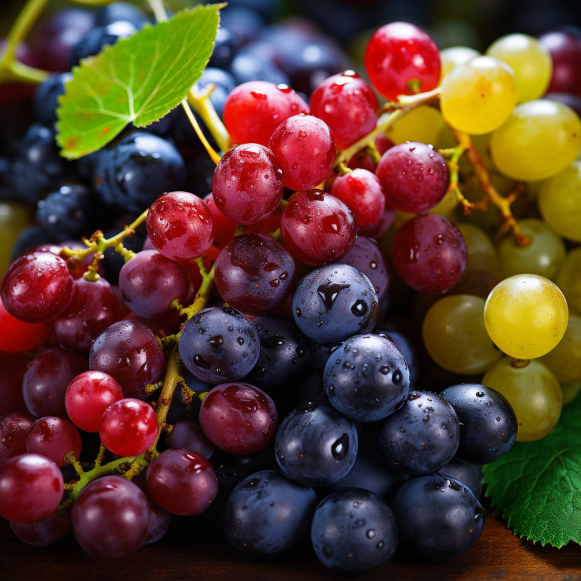
Is Quercetin a Better Drug Than Hydroxychloroquine?
Given the risks of chloroquine and hydroxychloroquine, as well as evidence that these drugs work for COVID-19 by acting as zinc ionophores, it’s worth considering whether other, more natural zinc ionophores can be used.
One prime example is quercetin, a naturally occurring zinc ionophore. (22) According to a report from the Green Stars Project, (23) “Researchers from Oak Ridge National Lab used the world’s most powerful supercomputer, SUMMIT, to look for small molecules that might inhibit the COVID-19 spike protein from interacting with human cells and, interestingly, quercetin is fifth on that list.” (24)
Only three natural products have been found to inhibit the SARS-CoV-2 spike protein. Only luteolin, a polyphenol found in radicchio, green peppers, serrano and green hot chili peppers, chicory, celery, and many other foods, has been found to be slightly more effective. (25)
Quercetin is another flavonols compound that can be found in a variety of foods, including apples, Brassica vegetables, capers, onions, tea, and tomatoes, to name a few. It can also be found in ginkgo biloba, St. John’s Wort (Hypericum perforatum), and elderberry (Sambucus canadensis).
Quercetin has already been shown in studies to be a potent immune booster and broad-spectrum antiviral. According to a 2016 study (26) published in the journal Nutrients, one of quercetin’s mechanisms of action is the inhibition of LPS-induced tumor necrosis factor (TNF-) production in macrophages.
TNF- is a systemic inflammatory cytokine secreted by activated macrophages, a type of immune cell that digests foreign substances, microbes, and other harmful or damaged components. By modulating calcium influx into the cell, quercetin also inhibits the release of pro-inflammatory cytokines and histamine. (27)
Quercetin also stabilizes mast cells and has “a direct regulatory effect on basic functional properties of immune cells,” allowing it to inhibit “a huge panoply of molecular targets in the micromolar concentration range, either by down-regulating or suppressing many inflammatory pathways and functions.” (28)
Another 2016 study (29) concluded that it aids in the modulation of the NLRP3 inflammasome, an immune system component involved in the uncontrolled release of pro-inflammatory cytokines during a cytokine storm.
In vitro studies (30)(31)(32) have shown that quercetin has antiviral activity against SARS-CoV, and preliminary findings (33) suggest that it can also inhibit the SARS-CoV-2 main protease. More information about quercetin’s anti-inflammatory and antiviral properties can be found in “Quercetin Lowers Your Risk of Viral Illnesses.”
Quercetin is being researched for its potential use against COVID-19.
The good news is that researchers intend to investigate the use of quercetin against COVID-19. (34) According to Maclean’s, (35) Canadian researchers Michel Chrétien and Majambu Mbikay began researching quercetin in the aftermath of the 2003 SARS epidemic, which spread across 26 countries.
They discovered that a quercetin derivative provided broad-spectrum protection against a variety of viruses, including SARS. (36)(37) The 2014 Ebola outbreak provided another opportunity to investigate quercetin’s antiviral properties, and they discovered that it effectively prevented infection in mice “even when administered only minutes before infection.”
So, when the COVID-19 outbreak in Wuhan City, China, was announced in late December 2019, Chrétien contacted colleagues in China and offered to assist. Chrétien and his team were officially invited to begin clinical trials in February 2020. Maclean’s magazine reports: (38) “Canadian and Chinese scientists would work together on the trials, which would include approximately 1,000 test patients.” As soon as clinical trials begin, Chrétien and Mbikay intend to join colleagues from the non-profit International Consortium of Antivirals, which Chrétien co-founded with Jeremy Carver in 2004 in response to the SARS epidemic, in manning a 24/7 communications center.The Food and Drug Administration in the United States has already approved quercetin as safe for human consumption, so the researchers can forego animal testing. If the treatment is effective, it will be widely available… Chrétien’s team claims that their treatment will only cost $2 per day.”
Quercetin and Zinc Dosage Recommendations
While the COVID-19 pandemic is in full swing—and for any future influenza season—supplementing with quercetin and zinc may be a good idea for many people to boost their immune system’s innate ability to fight infectious illness. In terms of dosage, here are some general guidelines:
Quercetin: Appalachian State University in North Carolina found that taking 500 mg to 1,000 mg of quercetin per day for 12 weeks results in “large but highly variable increases in plasma quercetin… unrelated to demographic or lifestyle factors.” (39)
Zinc (as well as copper): When it comes to zinc, keep in mind that more is not always better. In fact, it has the potential to backfire. When taking zinc, you should also keep a healthy zinc-to-copper ratio in mind. According to Chris Masterjohn, a doctorate in nutritional sciences,(40), in an article (41) and a series of Twitter posts: (42)
“In one study, 300mg/day of zinc as two divided doses of 150 mg zinc sulfate decreased important markers of immune function, such as the ability of immune cells known as polymorphonuclear leukocytes to migrate toward and consume bacteria.”The most concerning effect in the context of COVID-19 was a threefold decrease in the lymphocyte stimulation index. This is a measure of T cells’ ability to multiply in response to a perceived threat. This is especially concerning in the context of COVID-19 because poor outcomes are associated with low lymphocyte counts…
“The negative effect on lymphocyte proliferation observed with 300 mg/day and the apparent safety in this regard with 150 mg/d suggests that the potential for harming the immune system may begin somewhere between 150-300 mg/d…
“It is entirely possible that the detrimental effect of 300 mg/d zinc on the lymphocyte stimulation index is mediated primarily or entirely by induction of copper deficiency…
“As little as 60 mg/d zinc has been shown to have a negative effect on copper status.” This consumption reduces the activity of superoxide dismutase, an enzyme essential for antioxidant defense and immune function that is dependent on both zinc and copper…
“A study with relatively low zinc intakes found that acceptable zinc-to-copper ratios ranged from 2:1 to 15:1 in favor of zinc.” Copper appears to be safe to consume up to 10 mg/d.
“Notably, the maximum amount of zinc one could consume while staying in the acceptable range of zinc-to-copper ratios and also staying within the upper limit for copper is 150 mg/d.”
How Much Zinc Do You Require?
In his zinc article, Masterjohn goes into even greater detail, discussing maximum absorption rates and much more. (43) In summary, he suggests taking 7 to 15 mg of zinc four times per day, preferably on an empty stomach or with a phytate-free food.
In the United States, the recommended dietary allowance is 11 mg for adult men and 8 mg for adult women, with slightly higher doses recommended for pregnant and breastfeeding women, (44) so we’re not talking about significantly higher dosages.
In addition, one zinc acetate lozenge per day will provide you with an additional 18 mg of zinc. If you have been exposed to the virus, take one more lozenge after the exposure.
To avoid negative effects on your immune system, Masterjohn recommends keeping your total zinc intake below 150 mg per day. He also suggests getting at least 1 mg of copper per 15 mg of zinc from food and supplements.
Remember that there are numerous food sources of zinc, so a supplement may not be required. I consume approximately three-fourths of a pound of ground bison or lamb per day, which contains 20 mg of zinc. I don’t take any zinc supplements other than what I get from food, which is most likely in an optimal form for absorption.
Originally published on Mercola.com on April 27, 2020.
◇ References:
(1) Medrxiv.org April 14, 2020 DOI: 10.1101/2020.04.10.20060558 [Preprint]
(2) Medrxiv.org April 14, 2020 DOI: 10.1101/2020.04.10.20060558 [Preprint] (PDF full study)
(4) Medrxiv.org April 14, 2020 DOI: 10.1101/2020.04.10.20060558 [Preprint] (PDF) Table 2, Page 37
(5) Medrxiv.org April 14, 2020 DOI: 10.1101/2020.04.10.20060558 [Preprint]
(6) FDA.gov Fact Sheet, EUA of Hydroxychloroquine (PDF)
(7) PLOS ONE 2014; 9(10): e109180
(8) Preprints April 6, 2020 DOI: 10.20944/preprints202004.0124.v1
(9) Preprints April 6, 2020 DOI: 10.20944/preprints202004.0124.v1
(10) Preprints April 6, 2020 DOI: 10.20944/preprints202004.0124.v1
(11) Medrxiv.org April 11, 2020 DOI: 10.1101/2020.04.07.20056424
(12) Medrxiv.org April 11, 2020 DOI: 10.1101/2020.04.07.20056424 (PDF full study)
(13) Live Science April 13, 2020
(14) Antiviral Research, 2020;177:104762 Highlight bullest
(15) Clinical Infectious Disease, 2020; 10.1093/cid/ciaa237 Abstract
(16) Virology Journal, 2005;2(69) Abstract/Conclusion
(17) Cell Research, 2020;30:269 Abstract
(18) Nature March 18, 2020; 6 Article number 16, Correspondence
(19) Nature March 18, 2020; 6 Article number 16, Correspondence
(20) Clinical Infectious Diseases, 2020; doi.org/10.1093/cid/ciaa237 Abstract
(21) Medicinenet.com Chloroquine vs Hydroxychloroquine
(22) Journal of Agricultural and Food Chemistry 2014, 62, 32, 8085-8093
(23) Greenstarsproject.org March 27, 2020
(24) ChemRxiv.org March 11, 2020 (PDF full study), Table 3
(25) Myintakepro.com Luteolin Rich Foods
(26) Nutrients 2016 Marck; 8(3): 167, 5.1.2 Mechanism of Action
(27) Nutrients 2016 March; 8(3): 167, Table 1: Mast cell
(28) Nutrients 2016 March; 8(3): 167, 5.1.2 Mechanism of Action
(29) Mediators of Inflammation 2016; 2016, Article ID 5460302
(30) Journal of Virology Oct. 2004: 11334-11339 (PDF)
(31) Biotechnology Letters Feb. 15, 2012; 34: 831-838
(32) Bioorg Med Chem 2010 Nov 15;18(22):7940-7
(33) Preprints.org March 12, 2020
(34) CBC Feb. 28, 2020
(36) Bioorg Med Chem. 2006 Dec 15;14(24):8295-306
(37) Journal of Virology Sep 2004, 78 (20) 11334-11339, Antiviral activity of an analog of luteolin
(41) Chrismasterjohnphd.com Best Dose of Zinc for COVID-19 Prevention
(42) Twitter, Chris Masterjohn April 10, 2020
(43) Chrismasterjohnphd.com Best Dose of Zinc for COVID-19 Prevention
(44) NIH Zinc Fact Sheet


